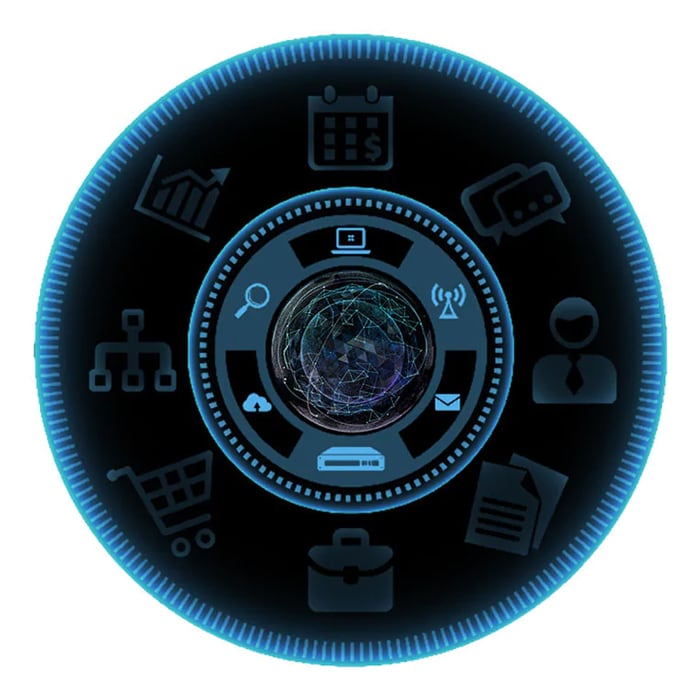Procurement operating model helps CFOs has been saved

Perspectives
Procurement operating model helps CFOs
Using a category management strategy to cut costs
CFO’s across industry sectors are being challenged to reduce costs—and for different reasons. Commercial enterprises are being challenged to profitably grow in an environment of rapid technological innovation and globalization, neither of which have created turbo-charged earnings growth as profits have stagnated since 2012. In the Federal Government, civilian agencies are facing massive budget cuts that threaten missioncritical programs. In the meantime, state governments have faced unprecedented austerity measures while Puerto Rico is climbing its way out of bankruptcy.
Explore content
- Introduction
- Category Managers lead the way
- A new centralized procurement operating model
- Advances in procurement technology
- Conclusion
Introduction
In this pressure-packed climate, how have CFOs responded to the need to cut cost? For some, the answer has been Category Management, a strategy that targets sustained reductions in the cost of products and services purchased from vendors (see Figure 1). This includes the cost goods sold (e.g. metals, plastics, and packaging, etc.) and overhead costs (e.g. IT hardware and software, facilities, office supplies, etc.). These costs are a natural target because a dollar increase (or decrease) results in a dollar increase (or decrease) in operating profit and cash flow.
Category Management strategies originated from a legacy cost reduction strategy called strategic sourcing. While it is not new, it has evolved over the last five years in ways that are creating, even more, cost reduction opportunities for CFOs. While the primary focus of this more comprehensive approach is supplier cost reduction, it has an added benefit of lowering operating costs for the entire procurement lifecycle—from spend analysis to contract close out.
In the early 2000s, commercial enterprises more aggressively harvested the benefits of a Category Management strategy. Public-sector entities began exploring it shortly thereafter. In 2016, the US Federal Government embraced it in a big way by launching a government-wide Category Management effort to target cost reductions on a $270 billion spend base1 and by naming a team of 11 federal procurement specialists to lead the effort.
To fully benefit from Category Management, CFO’s should consider using specialized procurement resources, consider modifying their organization’s operating model, and modernize their procurement technologies.
Category Managers lead the way
Category Management programs are run by a new breed of professionals, Category Managers, specially trained in strategic sourcing and procurement operations. Category Managers manage to a broader set of performance metrics that go beyond vendor savings and includes operating efficiency metrics such as—Procurement operating cost as a percentage of total savings, spend managed per procurement employee, and purchase orders processed per procurement employee. This added responsibility for operating performance keeps sourcing savings balanced with the cost required to achieve them.
Category Managers are also proficient in assessing markets. For example, they are more equipped to spot market trends that can be used to increase the level of vendor competition and to drive down cost. As supply markets continue to rapidly change, procurement organizations with strong Category Managers who can capitalize on market trends will be the first to profit and save.

A new centralized procurement operating model
In the past, strategic sourcing efforts lost steam because benefits slowed soon after realizing profits from easy opportunities. In addition, these programs did not have the organizational structure needed to sustain the benefits.
The Category Management operating model provides a formal structure (led by Category Managers) that focuses on strategic sourcing and procurement operations excellence. This is achieved by organizing procurement personnel around expense categories and centralizing strategic sourcing and transactional procurement activity. At the same time, category-specific centers of excellence that house different capabilities for specialized categories (e.g. IT, medical equipment, etc.) are established outside of the central procurement organization. A key to the operating model is that regardless of whether activities are operated centrally or from centers-of-excellence, the processes, technologies, and performance measurements are standardized and led from the center.
The Government of Puerto Rico is currently using a procurement operating model as a major component of its Fiscal recovery strategy as highlighted in its fiscal plan released in April of 20181. The existing procurement organization was fragmented and decentralized and the objective was to build a “centralized, transparent, and efficient procurement function.” Puerto Rico’s new centralized procurement operating model will be housed under the office of the CFO and will require that all procurement strategic and tactical activities be centrally executed while following new processes and legislation.

Advances in procurement technology
Category Managers and centralized procurement operating models are also enabled by new technologies that unlock millions of dollars tied up in procurement operations. Big companies and government agencies implemented on-premise enterprise procurement applications that are now being replaced by easier-to-use, cloud-based solutions operated today at a fraction of historical cost, saving millions in IT infrastructure investments and maintenance fees. These tools—along with the procurement technology pioneered by companies like Ariba and Oracle almost 20 years ago—will continue to be the mainstay of many procurement organizations for the foreseeable future. They’ll continue to increase worker productivity and, with the lower technology cost, provide a higher return on investment.
These enterprise procurement applications are also being augmented with new tools that leverage advances in cognitive data processing and robotic process automation (RPA) technologies. These new technologies are helping Category Managers meet aggressive savings and operating cost reduction targets, while also freeing up time for them to think more strategically. While advances in RPA can make procurement operating models more efficient, cognitive tools can make Category Managers more effective at identifying savings opportunities with better enterprise-wide spend analytics.
Agencies like the Department of Health and Human Services (HHS) are using RPA to take time and cost out of their procurement contract close-out process2. It’s a high-volume, transaction-oriented, manual process that relies on data from multiple non-integrated systems—all characteristics that make RPA a viable solution. Automating this work through RPA will help improve procurement employee efficiency and limit contract-close-out backlogs.
Cognitive computing is already changing the way enterprise-wide procurement spend data is being analyzed and categorized. It’s transforming rules-based systems from “if-then” rules-based logic to cognitive, experience-based reasoning so that analytical tools won’t confuse a “high-heel sandal” tape dispenser with a shoe—because the system can put “high-heel sandal” in context with “tape dispenser” and categorize the expense as office supplies. This is how our brain works, except we get tired and systems don’t, and the systems can process hundreds of thousands of descriptions in minutes.

Conclusion
Strategic sourcing has evolved into a more comprehensive Category Management approach for sustained operational cost take-out. Category Managers are actively focusing on both vendor and operating cost reductions, and new, more centralized operating models are helping maintain the focus.
While many organizations are still armed with traditional enterprise procurement tools that have evolved into better cloud-based solutions, new cognitive and RPA technologies are playing a role in helping Category Managers meet difficult savings and procurement operating cost take-out targets.
For any CFO facing cost pressure, Category Management should be a primary pillar in a broad operating cost reduction strategy. It’s being used in commercial and public-sector enterprises because it’s one of the few programs that can become self-funding—the savings realized can pay for a new operating model, new personnel and enabling technology. The first step in the journey to transition to a Category Management model is to develop the business case showing the payback on investments in a new operating model, new technology and more talented personnel. It’ll be the first step in a worthwhile journey toward sustained benefits.

Recommendations
Government & Public Services CFO Insights
A thought leadership series



